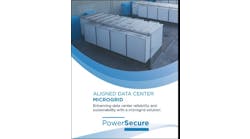Energy storage gets a big nod under recent changes to California’s self-generation incentives, which also place new emphasis on reducing greenhouse gas emissions.
The California Public Utilities Commission approved the revisions to the self-generation incentive program (SGIP) on June 23.
Under the changes, 75 percent of the funding goes to energy storage, said Matt Roberts, executive director of the Energy Storage Association.
“There was positive change on two fronts: allocating more money to storage, recognizing its greater greenhouse gas reduction benefits; and making it a more competitive system based on the actual performance of the systems, increasingly focused on greenhouse gases,” he said.
The annual budget for the program is $77 million, with 75 percent going to storage and systems tied to renewable energy generation given priority, according to Navigant Research. The remaining 25 percent of the funding will go to generation systems that include wind turbines, gas-powered microturbines and fuel cells.
“There was a systematic change to how monies are allocated,” said Roberts. “Before it was first-come, first-serve. Now it’s a lottery. All the submissions come in on the same day, and will be put into buckets based on their performance,” he explained. “In addition, now funding is based on the greenhouse gas reduction of your proposals.”
Before the change, a cat fight
Before the change, the reservation process happened once a year and everyone was on their computer to obtain a reservation, which was a “cat fight,” said John Sarter, CEO and founder of developer Off the Grid Design, whose nanogrid project, Sol-Lux Alpha, received funding through the program. Like others involved in the process, he was concerned about the fact that single companies got a big share of the monies. Under the changes, no developer can be awarded more than 20 percent of the monies, according to Navigant Research.
Under the changes, the CPUC set separate incentive rates for systems that are also receiving the Investment Tax Credit, according to Navigant. The initial rate for storage systems not receiving the ITC is now set at $0.50/Wh and at $0.36/Wh for systems that do receive the ITC. Under the changes, all residential storage systems get the full $0.50/Wh incentive, according to Navigant.
Roberts noted that it’s now difficult to get value out of residential storage systems. “There a lot of untapped potential on the residential side; we see cool energy monitoring technology, which tells you what your appliances are doing, but you can’t act on it other than unplugging the appliances.”
Residential storage systems allow residential customers to change their load profile, but there are few utility incentives that reward customers for doing that, he added.
As for the larger systems, the SGIP has helped get more projects into the field and drawn attention to their benefits, Roberts said. “Now that we’re starting to realize that value, we’re trying to refine the system so we get more systems up and running.”
The changes to California’s self-generation incentives are detailed here.







